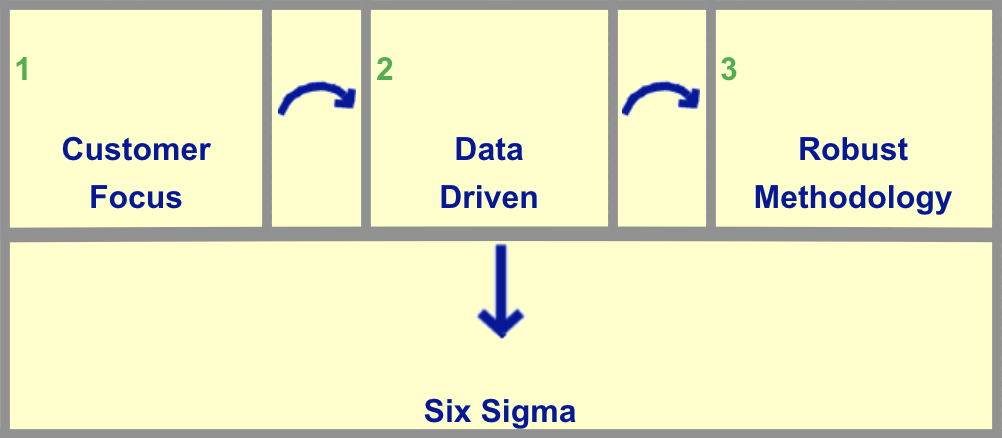
There has been a tremendous amount of discussion around defining Six Sigma in terms people within your business or organization can understand.
A long time crusade of mine has been to help define Six Sigma in everyday terms for both my fellow business quality professionals and top managers alike.
Just like some other definitions already viewable on the iSixSigma boards (“Tell me about Six Sigma“, “Explaining Six Sigma Traps“), I start the explanation with the three over arching themes of customer focus, data driven, and robust methodology.
|
Depending on your audience, there may not be a need to define the DMADV and DMAIC methodologies. These tend to confuse those not ready for a full dissertation on the new process/product development and incremental, existing process improvement methodologies.
When you see the eyes of your audience begin to ‘glaze over’ — bail on the description. Stick to the three fundamental themes listed above.
I often find it useful to write these three themes on a white board or overhead for those individuals that are visual thinkers. Rather than just listening to your description, they can see and picture how the interrelationship can form while you explain each item.

Three simple over arching themes. And if they can remember just one supporting statement for why each is necessary, the prize is all the sweeter. Good luck!